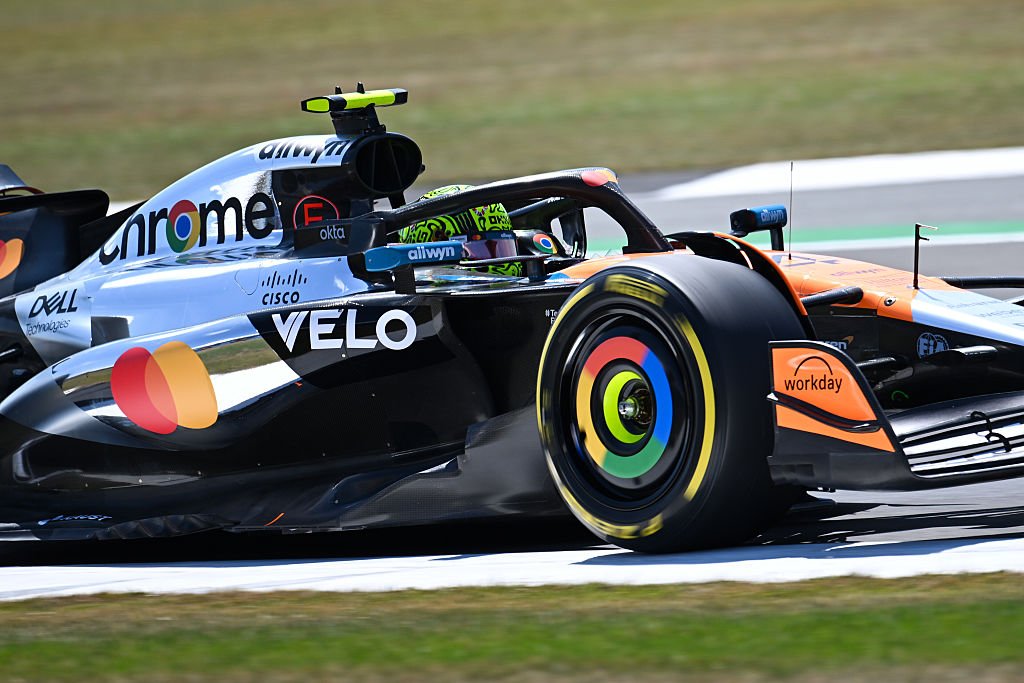McLaren and Other F1 Teams Unveil Major Upgrades Ahead of the British Grand Prix
As the excitement builds for the British Grand Prix, Formula 1 teams are making significant upgrades to their cars to enhance performance and maintain a competitive edge. Notably, McLaren has introduced an entirely new floor design, aiming to extend its lead after a remarkable one-two finish in Austria. This article delves into the latest developments from McLaren and other top teams, highlighting the changes made to enhance aerodynamics and overall performance on the track.
McLaren’s Innovative Floor Design
Fresh off their impressive performance in Austria, McLaren is focusing on optimizing its car’s aerodynamics with a complete redesign of the floor. According to the team, the new floor has been strategically revised to improve airflow and redistribute suction, which is crucial for maximizing aerodynamic efficiency. These enhancements are expected to yield significant gains in overall performance during races.
In addition to the floor modifications, McLaren is also implementing changes to the rear brake duct inlet. This adjustment is aimed at refining airflow management, which should positively impact both aerodynamic efficiency and brake cooling. With these upgrades, McLaren hopes to solidify its strong position in the standings and continue its momentum from the previous race.
Red Bull’s Continued Development
Red Bull Racing is also making strides with its floor design ahead of the British Grand Prix. Following a successful update at the previous race, the team has introduced further refinements to the floor. These revisions focus on improving pressure distribution across the entire length of the floor, allowing the car to extract more downforce while ensuring that flow stability is maintained.
Additionally, Red Bull has made subtle adjustments to the floor fences. These changes are designed to optimize load extraction without compromising airflow stability further down the car. As Red Bull seeks to maintain its competitive edge, these updates are expected to play a pivotal role in their performance at Silverstone.
Aston Martin’s Performance Enhancements
Aston Martin has also introduced a significant upgrade package, with the floor serving as the centerpiece of their improvements. The team has modified the floor’s body shape and made adjustments to the floor fences and edges. These changes aim to enhance the flow structures underneath the car, which should lead to increased local load on the lower surface and, consequently, better overall performance.
Complementing the floor modifications, Aston Martin has updated the profile of the engine cover bodywork. This comprehensive approach to aerodynamic refinement reflects the team’s commitment to enhancing their competitiveness in the ongoing championship battle.
Haas’s Strategic Upgrades
Haas F1 Team is taking a similar route to Aston Martin, focusing on enhancements to the car’s floor. The updates include modifications to the floor body, floor fences, and edges, all designed to improve underfloor airflow management. This attention to detail is expected to increase ground effect efficiency, particularly during lateral load conditions encountered in corners.
The result of these upgrades is anticipated to be improved cornering stability, increased mid-corner speeds, and greater driver confidence due to more consistent aerodynamic behavior. Furthermore, Haas is introducing a new sidepod inlet along with adjustments to the rearview mirrors, all intended to facilitate cleaner airflow to the car’s rear.
Racing Bulls and Williams Make Tactical Adjustments
Racing Bulls, another competitor in the F1 circuit, is implementing minor changes to its front wing. These adjustments involve smaller profiles for the flap elements, allowing the car to better meet balance requirements at the high-speed Silverstone circuit. Such fine-tuning is essential for optimizing performance in demanding racing conditions.
Meanwhile, Williams Racing has also made updates, particularly to the floor fences, which are expected to enhance the car’s performance downstream. These incremental changes can make a significant difference in a competitive field where every fraction of a second counts.
Sauber’s Notable Gains
One of the standout teams in recent weeks has been Sauber, which continues to focus on its floor development. The latest upgrades include forward floor geometry modifications aimed at improving the car’s downforce efficiency. Alongside this, Sauber has introduced a front wing update similar to that of Racing Bulls, addressing balance requirements for optimal performance.
These advancements highlight Sauber’s commitment to continuous improvement as they strive to secure a stronger position in the championship standings. The team’s ongoing development efforts demonstrate the importance of innovation in the fast-paced world of Formula 1.
Conclusion
As the British Grand Prix approaches, teams are leaving no stone unturned in their quest for performance enhancement. McLaren’s new floor design, along with the upgrades from Red Bull, Aston Martin, Haas, Racing Bulls, and Sauber, exemplifies the dynamic nature of Formula 1 engineering. The continuous pursuit of aerodynamic efficiency and performance optimization ensures that fans can expect thrilling races filled with intense competition.
With these strategic upgrades, each team hopes to gain valuable ground in the championship, making the upcoming race at Silverstone one to watch. The dedication and ingenuity displayed by these teams not only contribute to their success on the track but also push the boundaries of automotive engineering in the world of motorsport.
